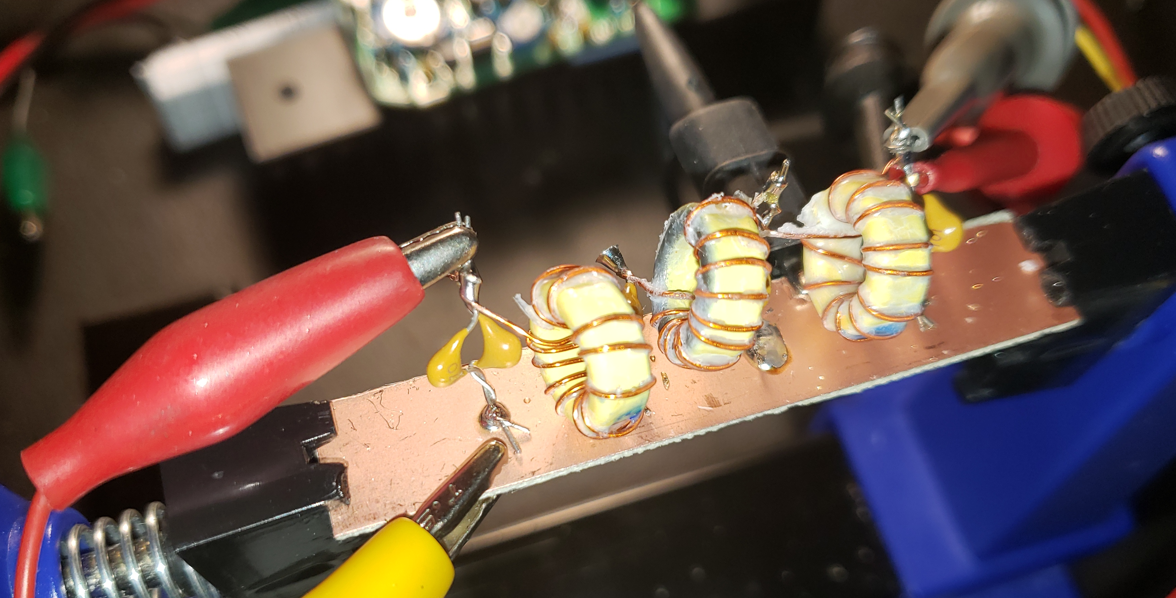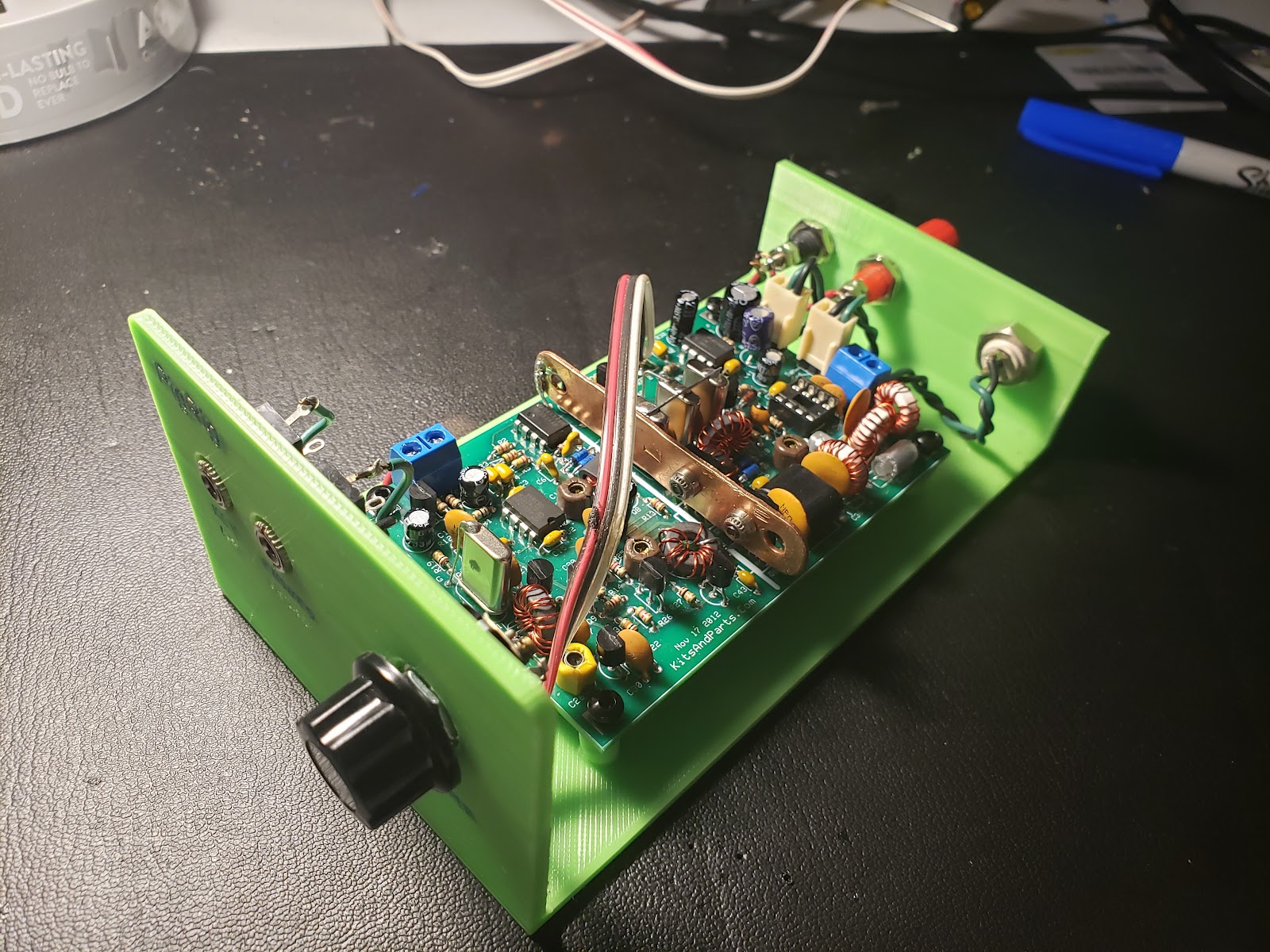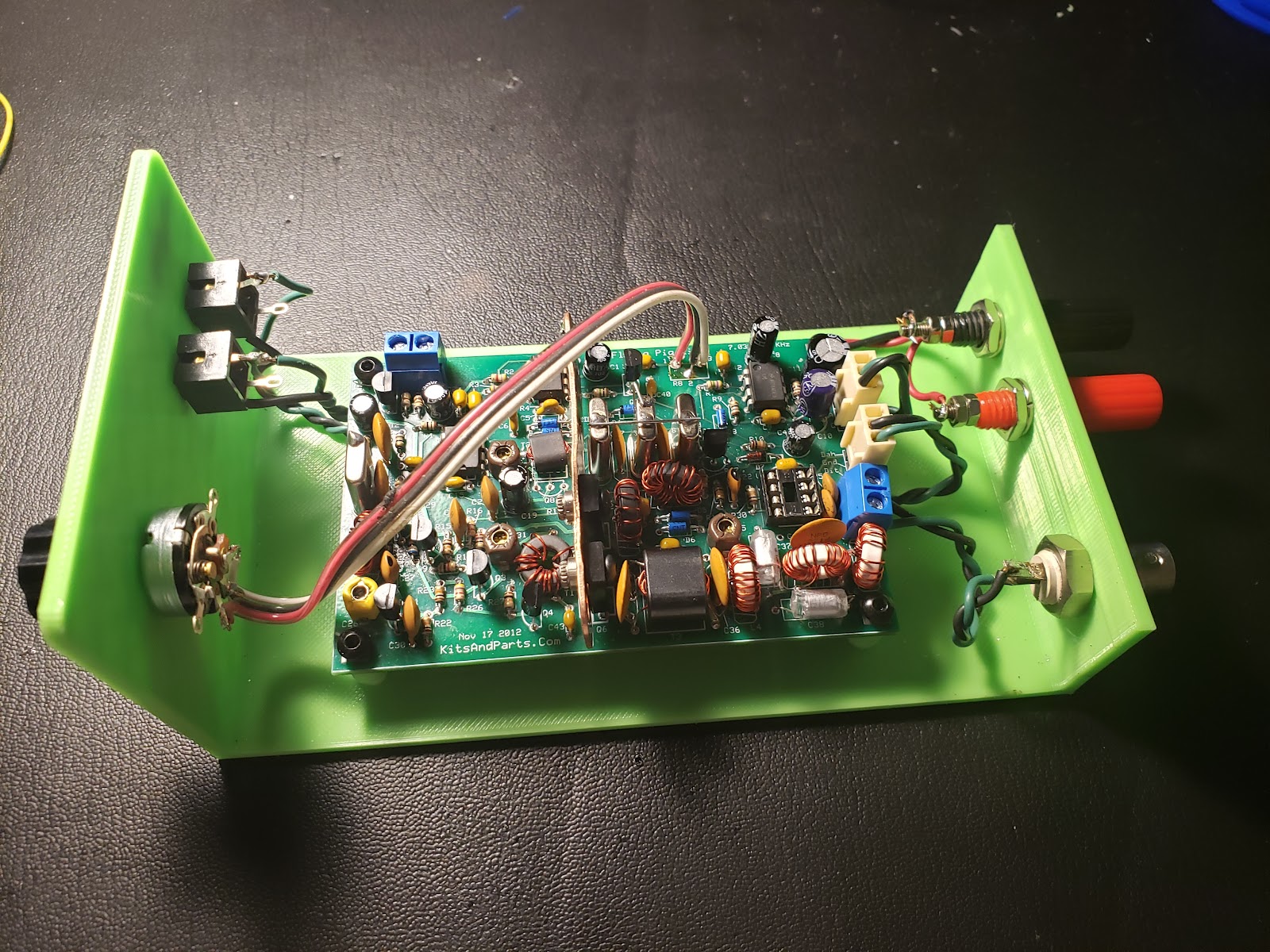The photo below shows the setup to test using the Tuna Tin S with the 10W linear amp. Click to enlarge.
- The Tuna Tin S is on the left in its green case. It is supplied from a 5V wall wart via a USB micro connector to the Wemos D1 Mini, which supplies regulated 3.3V to the other components in the unit: 1) encoder, 2) display and 3) Si5153 breakout board. Channel 1 of the oscope is connected to the RF output of the unit.
- The RF output of Tuna Tin S is wired to a DC blocking capacitor over to the input of the 10W amp. The amp is supplied with 12VDC from a lab power supply. A test lead is used to ground the enable control line of the amp to turn it on for testing.
- The output of the RF amp is routed to the 40m low pass filter, seen built on the end of a copper clad PCB. The output of the 40m low pass filter is routed to a dummy load seen on the extreme right of the photo. Channel 2 of the oscope is connected across the dummy load.
The input is about 3 Vpp, and is a square wave. There is excessive ringing. The ringing may be coming from the scope probe, but could also be due to the lack of a resistive termination at the input of the amp.















